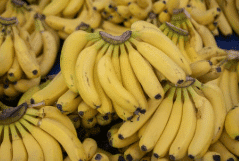CBSE Worksheet Class 4 Maths Chapter 13 - The Transport Medium Free Download
Q1: Multiple Choice Questions
1. What is the product of 15 × 14?
a) 200
b) 210
c) 220
d) 230
2. Which of the following is equal to 24 × 100?
a) 240
b) 2,400
c) 24,000
d) 240,000
3. A bus can seat 20 people. How many people can 12 buses seat?
 a) 220
a) 220
b) 240
c) 260
d) 280
4. What is the remainder when 324 is divided by 14?
a) 2
b) 4
c) 6
d) 8
Q2: Answer the Following Questions
5. Solve: 11 × 200.
6. Calculate: 40 × 50.
7. Find the product: 16 × 100.
8. Divide: 400 ÷ 20.
9. Solve: 7 × 25.
10. What is 30 × 200?
Q3: Word Problems
11. A train has 24 coaches, each carrying 72 passengers. How many people can travel on the train?

12. A brick kiln produces 125 bricks daily. How many bricks are made in a 30-day month?
13. 870 bananas are packed in bunches of 10. How many bunches are there?
 14. A school trip has 36 students and 6 teachers. Each bus seat fits 2 people. If there are 25 seats, are there enough seats?
14. A school trip has 36 students and 6 teachers. Each bus seat fits 2 people. If there are 25 seats, are there enough seats?
15. ₹1,000 is divided equally among 10 grandchildren. How much does each get?
16. If 64 flights carry 152 people each, how many people were there in total?
17. A boat ride costs ₹1,200 for 8 people. What is the cost per person?
 18. A bus ticket costs ₹60, and a boat ride costs ₹1,200 for 8 people. What is the total cost per person?
18. A bus ticket costs ₹60, and a boat ride costs ₹1,200 for 8 people. What is the total cost per person?
19. A snake boat is peddled by 128 people. How many people are needed for 5 such boats?
20. Compare: 15 × 100 vs. 15 × 200. Which is greater?
FAQs on CBSE Worksheet Class 4 Maths Chapter 13 - The Transport Medium Free Download
| 1. What is a transport medium? |  |
| 2. Why do living organisms need a transport medium? |  |
| 3. Can you give examples of transport media in plants and animals? |  |
| 4. How does the transport medium function in the human body? |  |
| 5. What role does the transport medium play in ecosystems? |  |





















